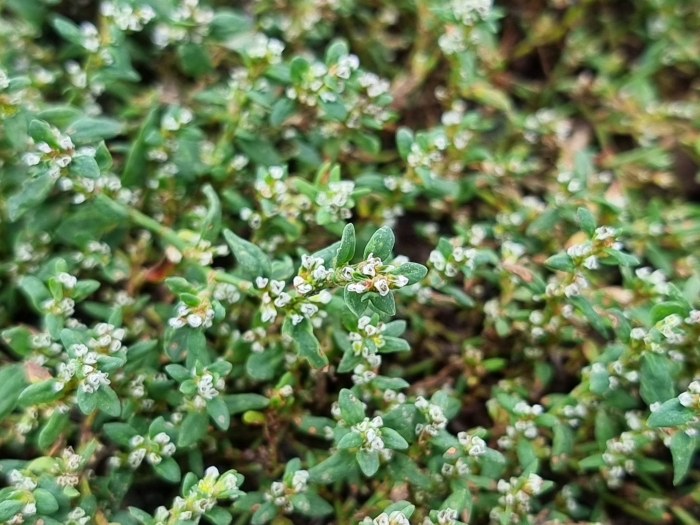Equal-Leaved Knotgrass
(Polygonum arenastrum)
Equal-Leaved Knotgrass (Polygonum arenastrum)
/
/

© Werner Schuster
CC BY 4.0
Image By:
© Werner Schuster
Recorded By:
Copyright:
CC BY 4.0
Copyright Notice:
Photo by: © Werner Schuster | License Type: CC BY 4.0 | License URL: http://creativecommons.org/licenses/by/4.0/ | Uploader: werner_schuster | Publisher: iNaturalist |























Estimated Native Range
Summary
Polygonum arenastrum, commonly known as equal-leaved knotgrass, is a summer annual herb that is native to Europe, Asia and North Africa. It has been introduced to North America, where it is often considered a noxious weed. In its native habitat, it is commonly found in disturbed sites such as fields, roadsides, and urban areas, thriving in compacted soils. It typically grows to a height of 4-6 inches (10-15 cm) with wiry stems that form a dense, mat-like ground cover. The plant features small, inconspicuous white to green flowers that bloom along the stems from late spring to early fall. The flowers are not showy, but they are prolific and contribute to the plant’s invasive potential.
Equal-leaved knotgrass is known for its high tolerance to drought and poor soil conditions, making it a resilient plant in challenging environments. It is not typically cultivated for ornamental purposes due to its invasive nature and is more often managed to prevent its spread in gardens, turfgrass, and agricultural lands. For cultivation, it requires minimal water once established and can grow in a variety of soil types with poor to moderate drainage. While it prefers full sun, it can also tolerate partial shade. There are no popular garden cultivars of this species due to its weedy characteristics. Gardeners should be cautious of its potential to become invasive and its ability to outcompete native plants.CC BY-SA 4.0
Equal-leaved knotgrass is known for its high tolerance to drought and poor soil conditions, making it a resilient plant in challenging environments. It is not typically cultivated for ornamental purposes due to its invasive nature and is more often managed to prevent its spread in gardens, turfgrass, and agricultural lands. For cultivation, it requires minimal water once established and can grow in a variety of soil types with poor to moderate drainage. While it prefers full sun, it can also tolerate partial shade. There are no popular garden cultivars of this species due to its weedy characteristics. Gardeners should be cautious of its potential to become invasive and its ability to outcompete native plants.CC BY-SA 4.0
Plant Description
- Plant Type: Herb
- Height: 0.3-0.5 feet
- Width: 3-4 feet
- Growth Rate: Rapid
- Flower Color: White, Green
- Flowering Season: Summer, Fall
- Leaf Retention: Deciduous
Growth Requirements
- Sun: Full Sun
- Water: Medium
- Drainage: Medium, Fast
Common Uses
Erosion Control, Low Maintenance
Natural Habitat
native to Europe, Asia and North Africa and found in disturbed sites such as fields, roadsides, and urban areas
Other Names
Common Names: Oval-leaf Knotweed, Common Knotgrass, Doorweed, Equal-Leaved Knotgrass, Matweed, Wireweed, Prostrate Knotweed
Scientific Names: , Polygonum arenastrum,
GBIF Accepted Name: